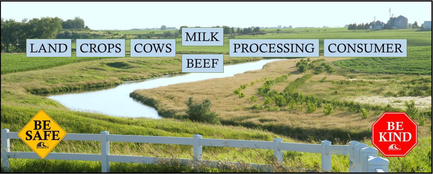Dairy
Here at Riverview, we utilize both rotary and parallel parlors. Each site is a little different from the others, but the activity is the same: milking cows. Each cow produces about eight gallons of milk per day which is sent to processing plants to make cheese. It is very important for cows to receive the proper nutrition and animal care. This is done by utilizing a nutritionist and sophisticated feed technology. All of our cows have electronic identification tags in their ears which provide the dairy with health data. For animal comfort, we provide free-stall housing which allows cows to move about at their leisure. Cross ventilation in our northern barns keeps the cows cool and comfortable and reduces flies. Finally, pens are cleaned daily and bedding is refreshed to keep the cows clean and dry.
We know our attitudes and knowledge directly affect animal care. Because of this, trainings are held throughout the year to stay up-to-date about specific best practices and to build an overall awareness of animal well-being.
We know our attitudes and knowledge directly affect animal care. Because of this, trainings are held throughout the year to stay up-to-date about specific best practices and to build an overall awareness of animal well-being.
Calves are an important part of the dairy cycle. Within our northern dairies, cows give birth in individual birthing pens. The calves are then weighed and given an identification tag. They are also fed the cows’ first milk which is called colostrum. Calves are transported to our heifer ranches in New Mexico and Arizona. Here, all animals are bred using artificial insemination.

